Frida Kahlo, a painter and feminist who went down in history
December 12, 2021 Barmia 13Frida Kahlo was a Mexican painter who married Diego Rivera and is still regarded as a feminist icon.
Frida Kahlo, one of Mexico’s greatest artists, began painting mostly self-portraits after being severely injured in a bus accident.
In 1929, Kahlo married fellow communist artist Diego Rivera and became politically active. Before her death in 1954, she exhibited her paintings in Paris and Mexico.
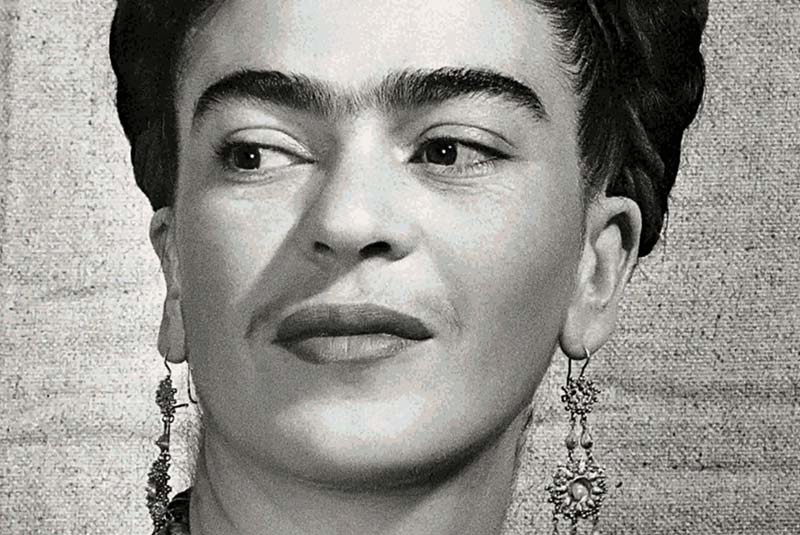
Family, education and early life of Frida Kahlo
Magdalena Carmen Frieda Kahlo y Calderón was born on July 6, 1907, in Coyoacán, Mexico City, Mexico.
Wilhelm (also known as Guillermo) Kahlo’s father was a German photographer who immigrated to Mexico and met and married her mother Matilde. Matilde and Adriana were her two older sisters, and Cristina, her younger sister, was born the year after Kahlo.
Kahlo got polio when she was six years old, leaving her bedridden for nine months. She limped as she walked while recovering from the sickness since the condition had affected her right leg and foot.
Her father encouraged her to play soccer, swim, and even wrestle — all of which were unusual for a girl at the time — to aid in her recuperation.
In 1922, Kahlo enrolled at the prestigious National Preparatory School. She was one of the few female students in that school, and she became known for her cheerful demeanor and love of colorful, traditional clothing and jewelry.
Kahlo hung out with a group of politically and intellectually similar students at school. Kahlo became more politically involved by joining the Young Communist League and the Mexican Communist Party.
Frida Kahlo’s Accident
On September 17, 1925, Kahlo and Alejandro Gómez Arias, a school classmate with whom she had a romantic relationship, were riding on a bus when it collided with a streetcar. Kahlo was stabbed by a steel handrail that entered into her hip and emerged out the other side as a result of the impact. As a result, she received multiple major injuries, including fractures in her spine and pelvis.
Kahlo returned home to recover after spending several weeks at the Red Cross Hospital in Mexico City. During her recovery, she began painting and finished her first self-portrait the following year, which she gave to Gómez Arias.
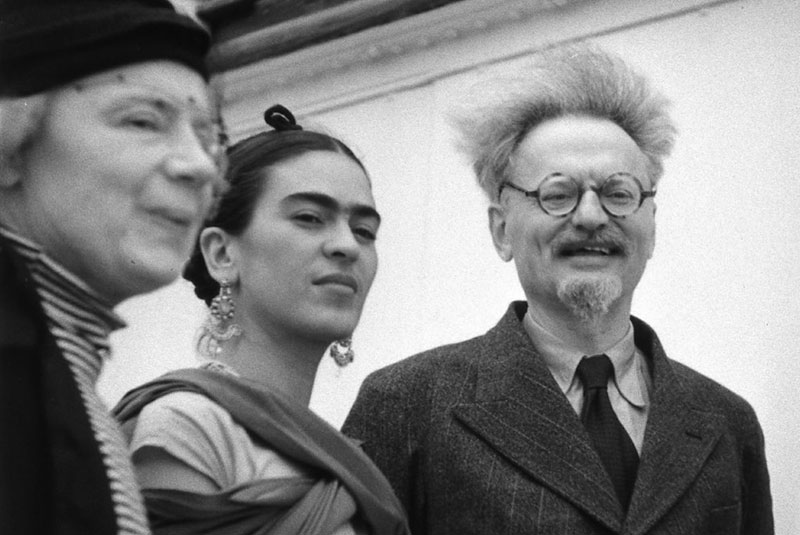
Frida Kahlo’s Marriage to Diego Rivera
Kahlo married famed Mexican muralist Diego Rivera in 1929. Rivera and Kahlo first met in 1922, when he went to her high school to work on a project. Rivera was working on a mural in the school’s lecture hall called The Creation, which Kahlo frequently watched. According to some reports, she told a friend that she would have Rivera’s child someday.
In 1928, Kahlo reconnected with Rivera. He supported her artwork, and the two began dating. During their early years together, Kahlo frequently followed Rivera based on where Rivera received commissions. They lived in San Francisco, California, in 1930. They then traveled to New York for Rivera’s exhibition at the Museum of Modern Art, and then to Detroit for Rivera’s commission at the Detroit Institute of Arts.
The time Kahlo and Rivera spent in New York City in 1933 was fraught with controversy. Rivera created a mural titled Man at the Crossroads in the RCA Building at Rockefeller Center after being commissioned by Nelson Rockefeller.
After Rivera included a portrait of communist leader Vladimir Lenin in the mural, which was later painted over, Rockefeller halted work on the project. Months later, the couple returned to Mexico and settled in San Angel, Mexico. Kahlo and Rivera maintained separate but adjoining homes and studios in San Angel, despite their unconventional marriage.
His numerous infidelities, including an affair with her sister Cristina, saddened her. In response to this betrayal by her family, Kahlo shaved off most of her trademark long dark hair. She was desperate to have a child and suffered another heartbreak when she miscarried in 1934.
Rivera and Kahlo had periods of separation, but they came together in 1937 to assist exiled Soviet communist Leon Trotsky and his wife Natalia.
In 1937, the Trotskys came to stay with them at the Blue House (Kahlo’s childhood home) for a short time after Trotsky was granted asylum in Mexico. Trotsky, a former rival of Soviet leader Joseph Stalin, feared being assassinated by his old adversary. During this time, Kahlo and Trotsky allegedly had a brief affair.
Rivera and Kahlo divorced in 1939. They were divorced for a short time before remarrying in 1940. The couple continued to live largely separate lives, with each becoming involved with other people over time.
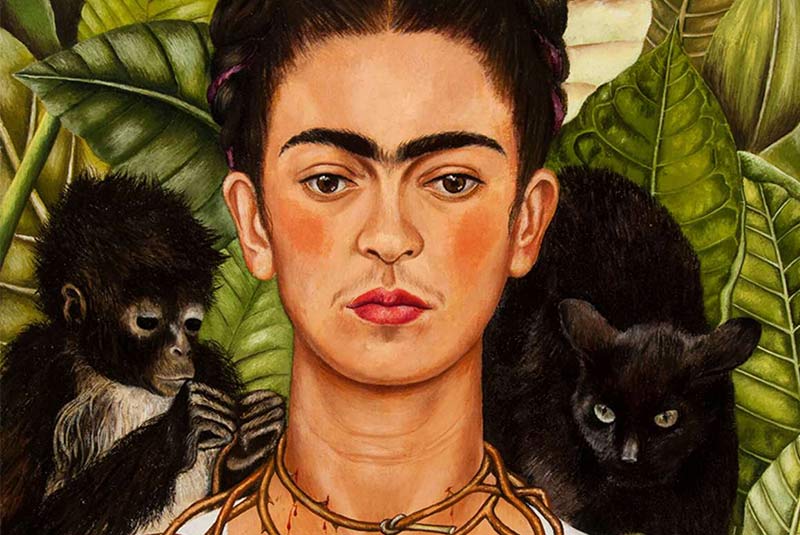
Artistic Career
While she never considered herself a surrealist, Kahlo befriended one of the movement’s pivotal figures, Andre Breton, in 1938.
That same year, she had a major exhibition at a New York City gallery, where she sold roughly half of the 25 paintings on display. As a result of the show, Kahlo received two commissions, one from famed magazine editor Clare Boothe Luce.
Kahlo moved to Paris for a short time in 1939. She exhibited some of her paintings there and made friends with artists such as Marcel Duchamp and Pablo Picasso.
In 1941, Kahlo was commissioned by the Mexican government to paint five portraits of important Mexican women, but she was unable to complete the project. That year, she lost her beloved father and continued to suffer from chronic health issues. Despite her personal difficulties, her work grew in popularity and was included in a number of groups shows around this time.
Kahlo had her first solo exhibition in Mexico in 1953. Despite being bedridden at the time, Kahlo attended the exhibition’s opening. Kahlo arrived by ambulance and spent the evening conversing and celebrating with the event’s attendees from the comfort of a four-poster bed set up in the gallery just for her.
Following Kahlo’s death, the feminist movement of the 1970s sparked renewed interest in her life and work, as Kahlo was regarded as an icon of female creativity by many.
The Most Famous Paintings of Frida Kahlo
Self-portraits were prevalent in Kahlo’s work. Among her most well-known works are:
‘Frieda and Diego Rivera’ (1931)
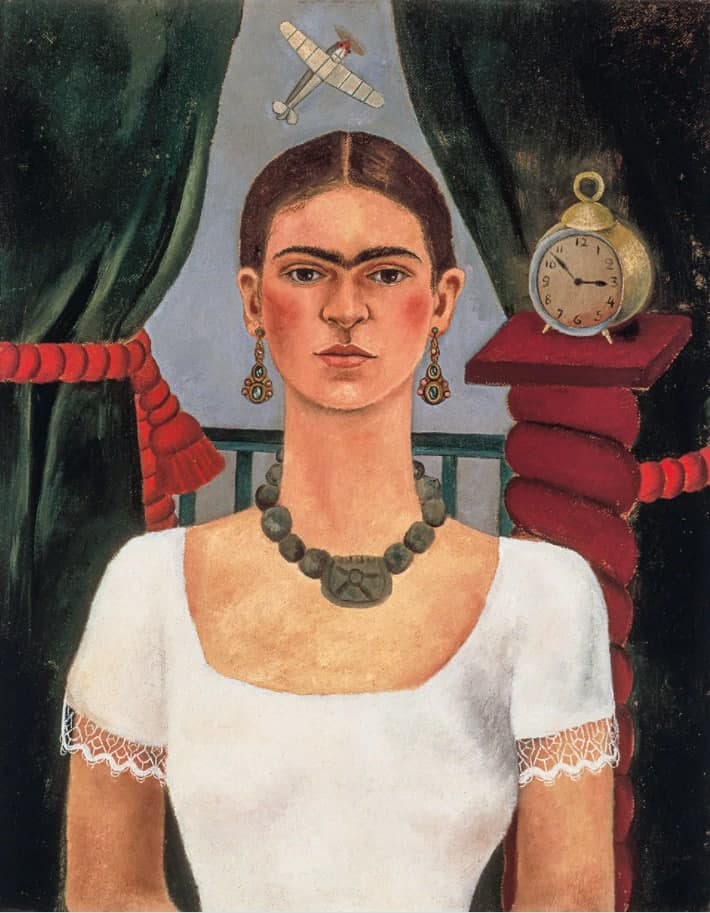
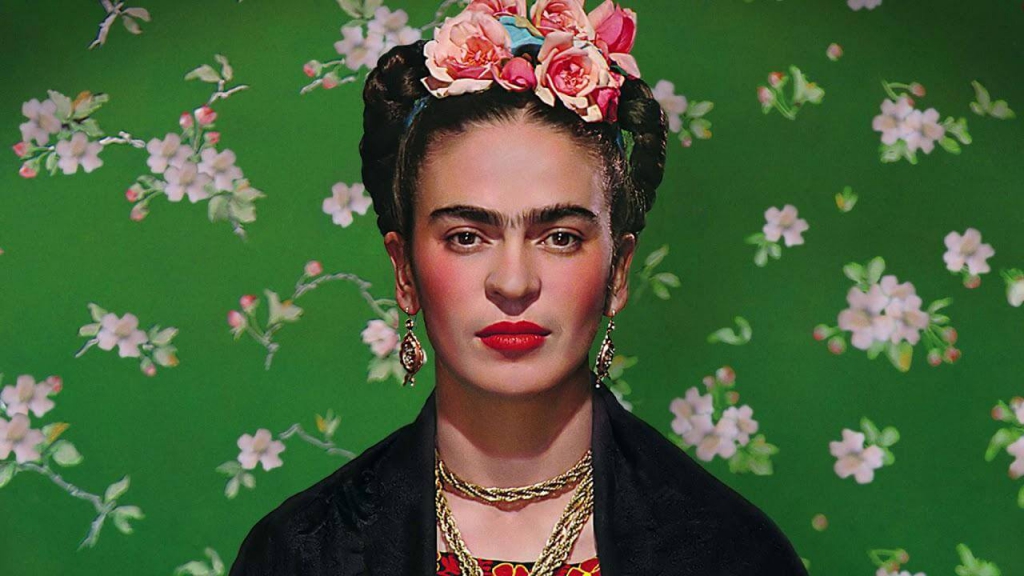
Death of Frida Kahlo
On July 13, 1954, about a week after her 47th birthday, Kahlo died at her beloved Blue House. There has been some speculation about the circumstances surrounding her death. It was reported that a pulmonary embolism caused it, but there have also been stories of a possible suicide.
In 1950, Kahlo’s health problems became nearly all-consuming. Kahlo spent nine months in the hospital after being diagnosed with gangrene in her right foot. During that time, she underwent several operations. Despite her limited mobility, she continued to paint and support political causes.
To stop the spread of gangrene, a portion of Kahlo’s right leg was amputated in 1953. Deeply depressed, Kahlo was hospitalized again in April 1954, this time for poor health or, according to some reports, a suicide attempt.
Two months later, she was admitted to the hospital with bronchial pneumonia. Regardless of her physical condition, Kahlo did not let it hinder her political activism. On July 2nd, she made her final public appearance, protesting the US-backed overthrow of Guatemalan President Jacobo Arbenz.
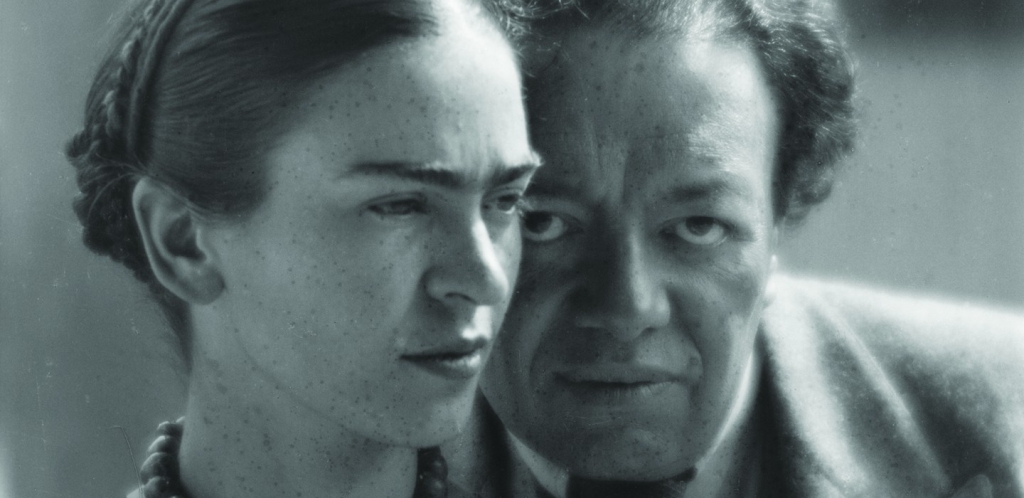
Movie on Frida Kahlo
Frida, a 2002 film based on Kahlo’s life, starred Salma Hayek as the artist and Alfred Molina as Rivera. Julie Taymor directed the film, which was nominated for six Academy Awards and won for Best Makeup and Original Score.
Frida Kahlo Museum
In 1958, the family home where Kahlo was born and raised, known as the Blue House or Casa Azul, was opened as a museum.
The Museo Frida Kahlo, located in Coyoacán, Mexico City, houses artifacts from the artist as well as important works such as Viva la Vida (1954), Frida and Caesarean (1931), and Portrait of my Father Wilhelm Kahlo (1952).
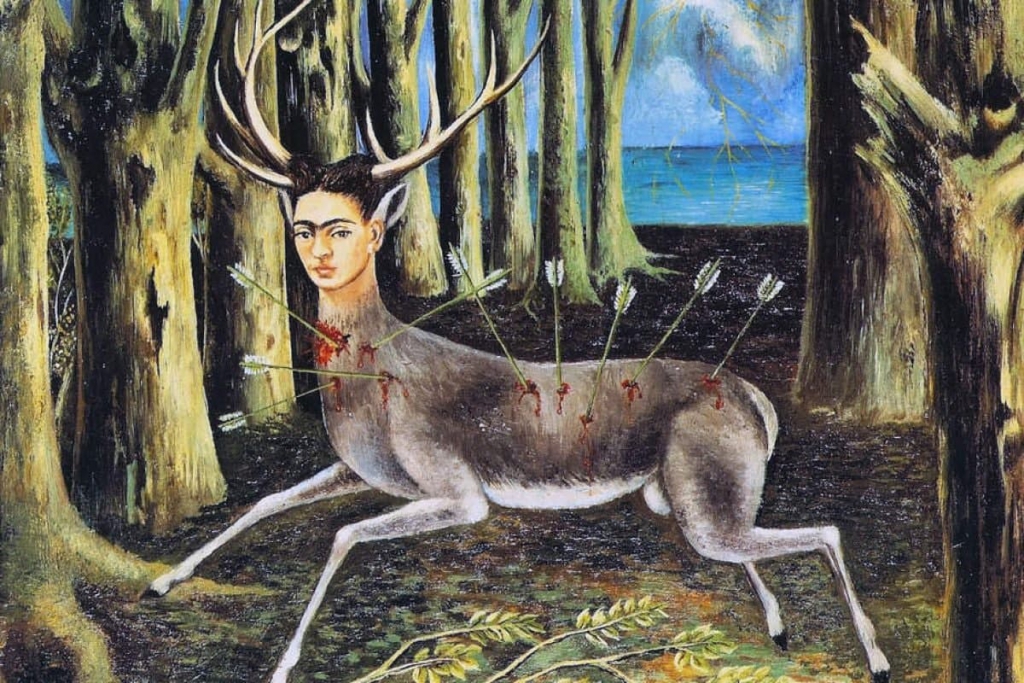
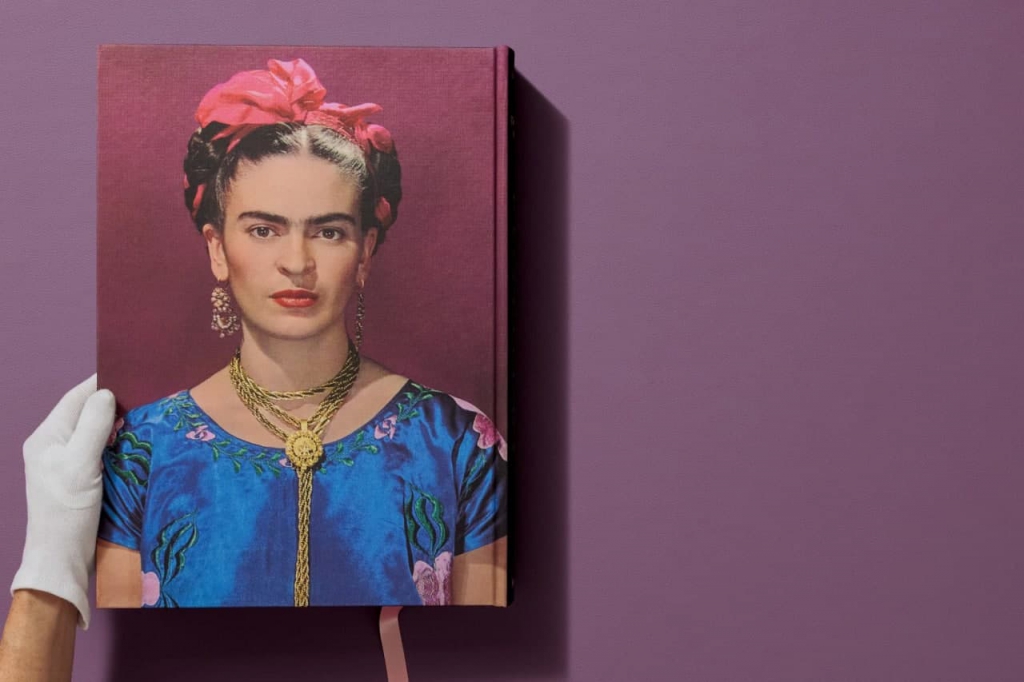
Book on Frida Kahlo
Frida: A Biography of Frida Kahlo by Hayden Herrera, published in 1983, contributed to the artist’s popularity. The biography covers Kahlo’s childhood, accident, artistic career, marriage to Diego Rivera, association with the communist party, and love affairs.
Are you as interested in Frida Kahlo as I am? Would you like to have decorative products related to Frida Kahlo at home or at work? Do not miss Romadon products
-
The History and Evolution of Metal Wall Art
 No CommentApr 24, 2024
No CommentApr 24, 2024 -
Bohemian Rhapsody, Fiction vs Reality: 13 Times the Movie Lied to Us.
 15Apr 22, 2022
15Apr 22, 2022 -
18 incredibly intriguing and astonishing facts about elephants.
 15Mar 17, 2022
15Mar 17, 2022 -
‘The Wall’ still standing tall; Pink Floyd’s revolutionary album turned forty years old.
 15Feb 26, 2022
15Feb 26, 2022 -
Christmas Tree | Legends And History
 13Jan 14, 2022
13Jan 14, 2022






This essay beautifully captures her essence. Let her vibrant spirit inspire us all. Viva Frida!
This essay beautifully captures her vibrant spirit and legacy. Viva Frida!
This essay paints a vivid portrait of her captivating life and enduring legacy. Let Frida’s unapologetic spirit and vibrant colors inspire you to embrace your own unique journey. Cheers to celebrating Frida’s timeless contributions to art and culture!
Frida Kahlo, a beacon of strength and creativity! This essay beautifully delves into her captivating life and artistry. Let Frida’s vibrant colors and bold strokes ignite your imagination and inspire you to embrace your own uniqueness. Viva Frida!
Frida Kahlo, a timeless icon of passion and resilience! This essay beautifully captures the essence of her artistry and spirit. Dive into Frida’s world and let her vibrant colors and bold strokes inspire you to embrace life’s complexities. Viva Frida!
Frida Kahlo, a captivating force of art and emotion! This essay brings her vibrant spirit to life, showcasing her resilience and passion. Explore the depths of her unique perspective and let Frida’s colors ignite your imagination. ¡Viva Frida!
Frida Kahlo, a timeless muse of resilience and creativity! This essay beautifully captures her vibrant spirit and enduring legacy. Explore the depths of Frida’s artistry and passion, and let her colorful strokes inspire your own journey. ¡Viva la vida!
Frida Kahlo, a trailblazer whose art speaks volumes! Her bold spirit and unapologetic self-expression continue to inspire and captivate. Dive into her world with this insightful essay and let Frida’s colorful legacy paint your imagination. Viva Frida!
Frida Kahlo, an icon of strength and creativity! Explore her extraordinary life through films like ‘Frida’ starring Salma Hayek, and ‘Frida Kahlo: A Ribbon Around a Bomb’ for a deeper dive into her art and legacy. Let her inspiring story ignite your imagination!
Frida Kahlo: the epitome of passion and resilience! This blog opened my eyes to the colorful world of Frida’s artistry and life. Did you know that Frida’s iconic unibrow and vibrant fashion choices challenged traditional beauty standards of her time? Thanks for sharing this inspiring journey through the life and legacy of such an iconic artist. Here’s to embracing our uniqueness just like Frida!
Wow, what a powerful read about Frida Kahlo! Her self-portraits are so captivating, and I loved learning more about her story and her bold use of color. Did you know that Kahlo was also a **fashion icon**? Her signature Tehuana dresses and floral crowns not only reflected her Mexican heritage but also became a powerful symbol of her individuality and strength. Such an inspiring artist and woman! ✨
Frida Kahlo, the queen of art and resilience! This essay beautifully captures the essence of her vibrant spirit and indomitable strength. Did you know that Frida often incorporated personal struggles into her artwork, creating a powerful narrative of pain and perseverance? Thanks for shining a light on this iconic artist and her timeless legacy!
Frida Kahlo, an absolute icon! This essay beautifully captures the essence of her artistry and activism. Her legacy as a painter and feminist continues to inspire and empower generations. Thanks for celebrating the brilliance of this unforgettable artist!